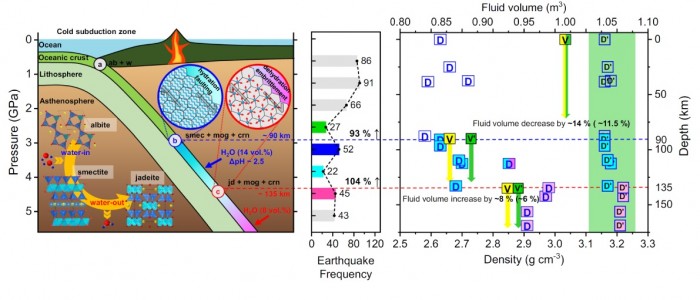“A role for subducted albite in the water cycle and alkalinity of subduction fluids”
- Authors
G.C. Hwang1, H. Hwang1, Y. Bang1, J. Choi, Y. Park, T.-Y. Jeon, B. Chae, H. Jung, Y Lee*
- Journal
Nature Communications
Vol.12·1155, 2021.02 - DOI
Abstract
Albite is one of the major constituents in the crust. We report here that albite, when subjected to hydrous cold subduction conditions, undergoes hitherto unknown breakdown into hydrated smectite, moganite, and corundum, above 2.9 GPa and 290 °C or about 90 km depth conditions, followed by subsequent breakdown of smectite into jadeite above 4.3 GPa and 435 °C or near 135 km depth. Upon the hydration into smectite, the fluid volume of the system decreases by ~14 %, whereas it increases by ~8 % upon its dehydration into jadeite. Both the hydration and dehydration depths are correlated to increases in seismicity by 93 % and 104 %, respectively, along the South Mariana trench over the past 5 years. Moreover, the formation of smectite is accompanied by the release of OH− species, which would explain the formation of moganite and expected alkalinity of the subducting fluid. Thus, we shed new insights into the mechanism of water transport and related geochemical and geophysical activities in the contemporary global subduction system.












